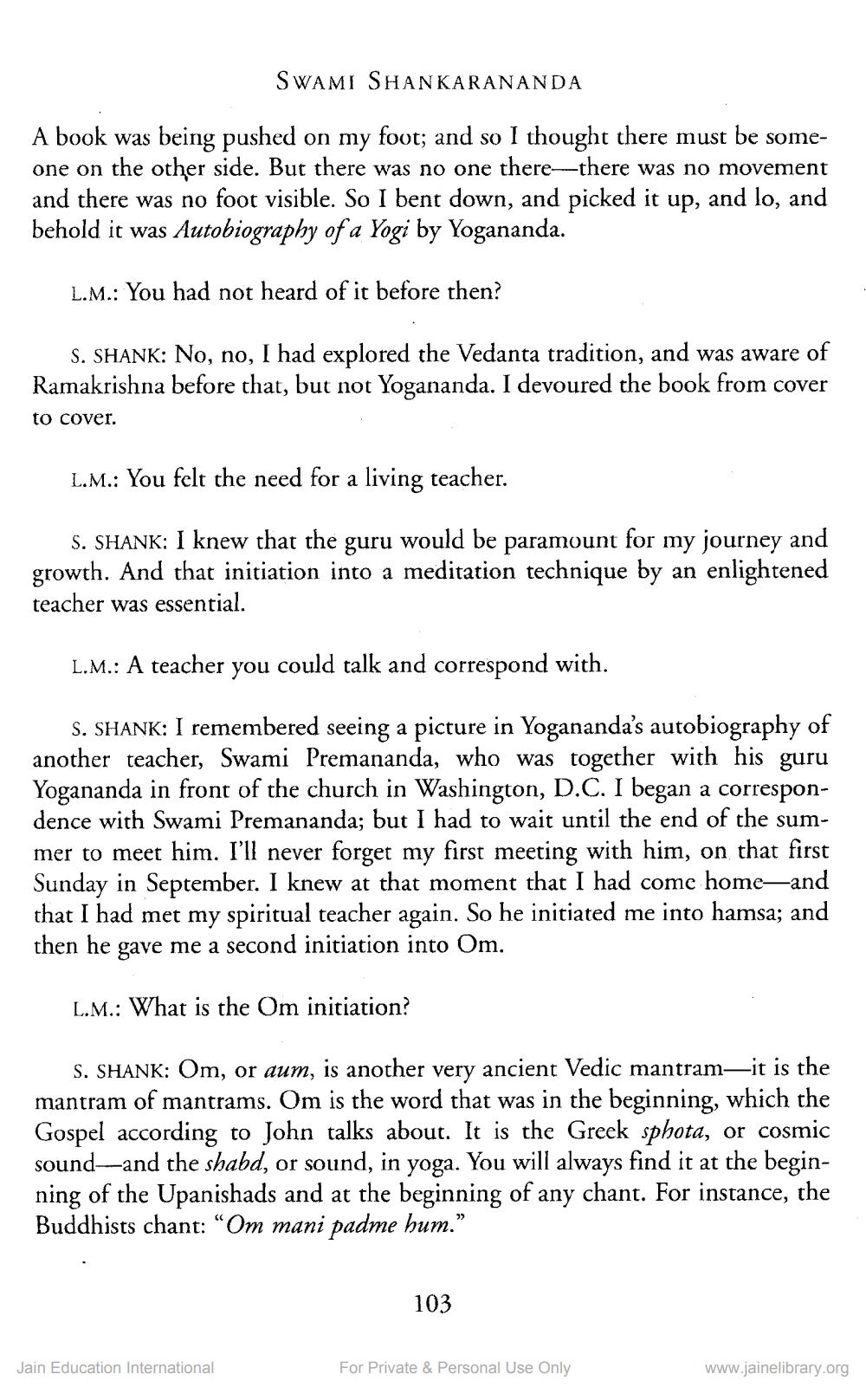________________
SW
MI SHANKARANANDA
A book was being pushed on my foot; and so I thought there must be someone on the other side. But there was no one there—there was no movement and there was no foot visible. So I bent down, and picked it up, and lo, and behold it was Autobiography of a Yogi by Yogananda.
L.M.: You had not heard of it before then?
S. SHANK: No, no, I had explored the Vedanta tradition, and was aware of Ramakrishna before that, but not Yogananda. I devoured the book from cover to cover.
L.M.: You felt the need for a living teacher.
S. SHANK: I knew that the guru would be paramount for my journey and growth. And that initiation into a meditation technique by an enlightened teacher was essential.
L.M.: A teacher you could talk and correspond with.
S. SHANK: I remembered seeing a picture in Yogananda's autobiography of another teacher, Swami Premananda, who was together with his guru Yogananda in front of the church in Washington, D.C. I began a correspondence with Swami Premananda; but I had to wait until the end of the summer to meet him. I'll never forget my first meeting with him, on that first Sunday in September. I knew at that moment that I had come home—and that I had met my spiritual teacher again. So he initiated me into hamsa; and then he gave me a second initiation into Om.
L.M.: What is the Om initiation?
S. SHANK: Om, or aum, is another very ancient Vedic mantram—it is the mantram of mantrams. Om is the word that was in the beginning, which the Gospel according to John talks about. It is the Greek sphota, or cosmic sound—and the shabd, or sound, in yoga. You will always find it at the beginning of the Upanishads and at the beginning of any chant. For instance, the Buddhists chant: "Om mani padme hum.”
103
Jain Education International
For Private & Personal Use Only
www.jainelibrary.org




